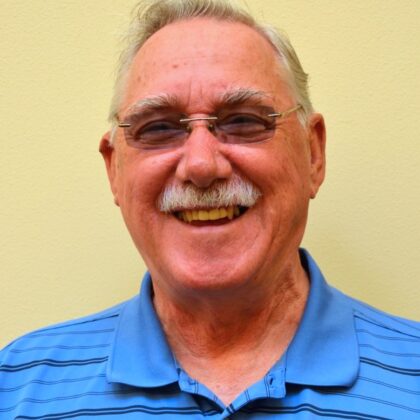“I am very happy to have had the opportunity to work and learn alongside people who are blind, who witness to me their courage, patience, and strength of character.”
-Br. Leonard Zaworski, SCJ

Many people think of picking up a new skill as they enter retirement: learn a musical instrument, start to paint, become a gardener or even learn a new language. It was the last – a new language – that Br. Leonard Zaworski, SCJ, settled on. But the language that he would learn was one that no one would hear: Braille. He shares his story in his own words:
So, finally schools are opening up in Wisconsin, both on-line and in-person. Braille assignments are beginning to come in and soon I’ll be putting on my “monastic scribe” hat.
I’ve been volunteering with ABLE (Audio and Braille Literacy Enhancement) at the Main Branch of the Milwaukee Public Library since mid 2012, when I began my online Literary Braille course.
My lessons continued for months. I worked on assignments, emailing the completed lesson to my instructor, and then going on to struggle with the next one. I was certified as a Braille Transcriber by the Library of Congress on February 27, 2013. Then my real training began. I was given a 500-page book on birdcalls!!!
Braille characters include 64 distinct patterns of six dots, including space, 26 alphabet characters, 10 numbers (with number indicators), adding up to 280 commonly used characters, along with indicators, word signs, punctuation signs, special symbols, contractions, and short-form words. There are more or less 572 total characters, plus those created by the transcriber. Braille is regulated by the 350-page, Rules of Unified English Braille, put out by the Braille Authority of North America, BANA.
Actually, Braille itself is not the most important part of transcribing a document. How everything is formatted on the page tells the Braille reader what is important on the page, indicating the main text, notes, footnotes, boxed notes, photos and drawings. And this, for the most part, is the responsibility of the Braille transcriber. Every literary type has its own formatting possibilities (poetry, plays, textbooks, tests…) which is regulated by the 400-page, Braille Formats: Principles of Print-to-Braille Transcription, also put out by BANA.
And then, there are the language codes for Spanish, French, German and Latin with their own formatting rules.
I completed my course in Music Braille, online, and received my Library of Congress Certification for Associate Transcriber of Music Braille, in February, 2016, which allows me to transcribe single line voice and instrumental music. During these months of the pandemic I have been working on a Braille Mathematics course (which includes notation for algebra, geometry, calculus and chemistry). At this point, as schools begin, I will be able to transcribe math for lower grade students, as I continue to progress toward transcribing higher math.
During the school year ABLE becomes very busy transcribing for students of every level in the schools throughout Milwaukee. When the transcriber gets an assignment (in Dropbox) with instructions and deadlines, we have to decide what goes on what page, and how. After the assignment is transcribed into Braille, it has to be checked for errors. The transcriber proofreads the document about three times, once every several hours, or days, before sending it to the ABLE office to be embossed. When they receive it at the office, a proofreader goes over it again. If there are errors, it is sent back to the transcriber for correction. In my case, I’m the only Music Transcriber, so I need to be extra careful. This process can become very intense when there are short deadlines (the student needs it in class), so it can take many hours of work to get an assignment completed in time.
ABLE started 55 years ago when Sr. Melmarie Stoll took a 6-year-old blind student into her classroom. At that time there were no materials available in Braille with which to teach. Sr. Melmarie brought together a small group of trained Braillists and Braille students and began transcribing textbooks for students in two Milwaukee area schools.
Now with a staff of 10, and many volunteers, ABLE services the state of Wisconsin and beyond, Brailling menus for restaurants, requested books of all kinds, church bulletins and ceremonies, music, materials in Spanish, German and French… and math.
Eight years ago I was trying to find a meaningful ministry. Entering into retirement was easy at first. After spending 12 years in India, I enjoyed being back in the United States. I knew that as I grew in age I would become more limited, so I wanted something that I would be able to continue in old age. A few years before I retired I spent a year in Baltimore when my mother’s health began to deteriorate and I took a year long course in Digital Media at Johns Hopkins University. One of the things that stuck with me from the course was the constant concern about how to include elements in whatever projects we worked on that would serve the needs of people who are sightless.
When I discovered ABLE online and learned that it was possible to do Braille transcriptions on a computer, I called the Braille office and was invited to visit. Now here I am. It has been very challenging, but I found that I am good at it. I am very happy to have had the opportunity to work and learn alongside people who are blind, who witness to me their courage, patience, and strength of character. And I look forward to how I might continue to contribute to ABLE in more ways.
IMAGE at the top of the page: the soprano part for the song “All Thus Bright and Beautiful” transcribed into Braille
